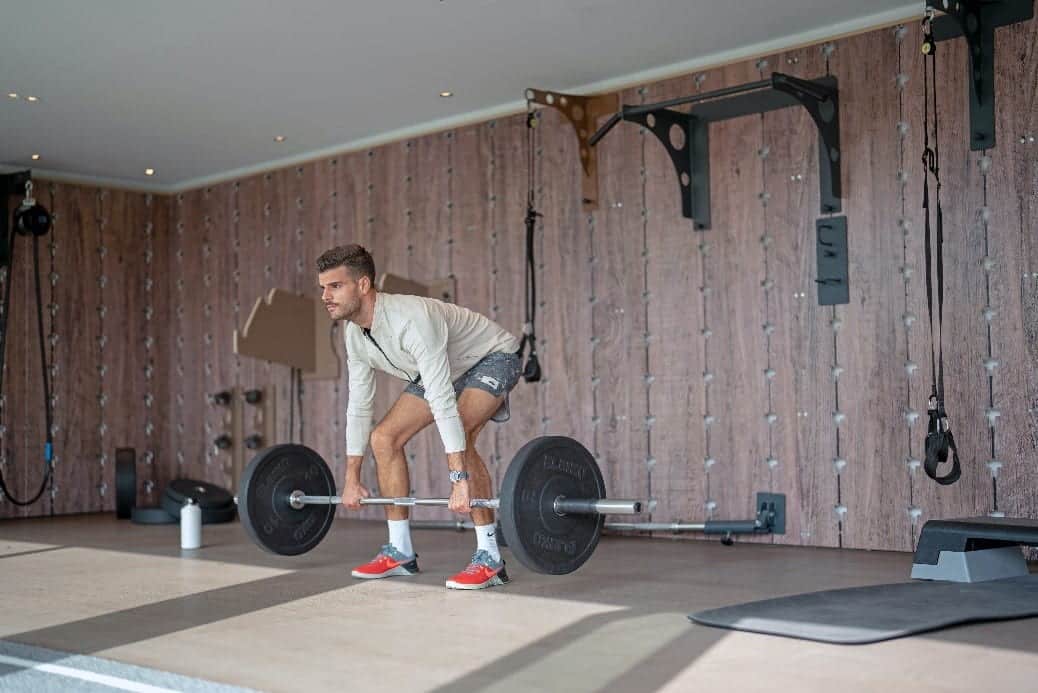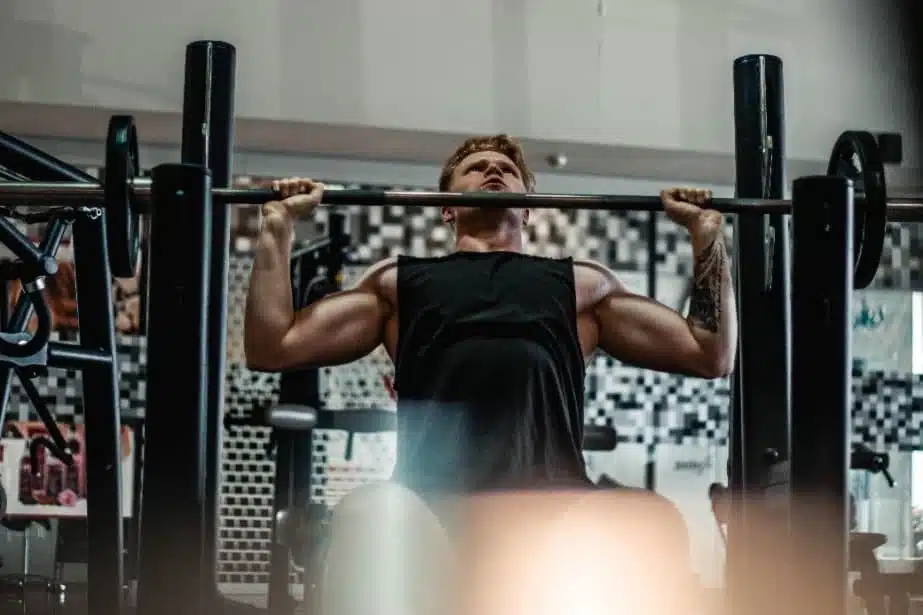8 de January de 2025
Oscillatory Training: A New Approach to Strength and Conditioning
History of oscillatory training

Oscillatory training is a method that emerged based on Sherrington’s law of reciprocal inhibition which states that for one muscle to contract, another must relax (Johnson, 1960). Several decades ago, Matveyev, one of the most influential Russian scientists in the field of training, found that one of the main differences between fast and slow athletes was their ability to relax the antagonist musculature in order to contract the agonist (Verkhoshansky & Siff, 2009). The athlete who had better coordination between the muscles that contracted (agonists) and those that had to relax (antagonists) was a better athlete.
When we speak of agonist musculature we refer to the muscle groups that create the movement, while the antagonist musculature are the muscle groups that oppose the movement. For example, when a pitcher in baseball throws the ball with an explosive contraction, the front shoulder muscles, as well as the pectoralis, triceps brachii, and other agonists must contract rapidly. On the opposite side, the antagonists slow down the movement as protection to prevent us from hurting ourselves (Lyle & Nichols, 2019). This mechanism serves as protection, but is designed to overprotect, so it can be trained by making it relax more quickly and allow a higher rate of force by the agonist musculature (Chalmers, 2002).
Oscillatory training is used to accelerate the relaxation of antagonistic muscles
The best athletes are able not only to perform explosive contractions at high speeds, but also to relax the antagonist musculature at higher speeds than the rest (Dietz & Peterson, 2012). When an athlete has a slower relaxation rate of his antagonist muscle complex, he is limited in his force production. Oscillatory training focuses on maximizing the ability to generate force in the minimum amount of time possible. To do so, he performs very short and fast repetitions that allow the antagonist muscles to relax more quickly and “get in the way” less.
What does oscillatory training consist of?

Oscillatory training uses very fast movements with a very short range of motion of less than 10 cm distance. This type of execution is a far cry from traditional repetitions where we perform a full, or nearly full, range of motion. On the contrary, in oscillatory training the athlete constantly pushes and pulls the bar as fast as possible. Cal Dietz and Ben Peterson, authors of the book “Triphasic training”, where oscillatory training is explained extensively, point out that the feedback for the athlete to understand what to do is “try to turn the light switch on and off as fast as you can” (Dietz & Peterson, 2012).
Each repetition of oscillatory training teaches the muscle complex to switch from concentric acceleration to eccentric deceleration. These rapid changes between the pull and push increase the rate at which the antagonist muscle learns to relax, and improves force production.

Best Velocity Based Training Devices – Full Review 2025
Oscillatory training for better intermuscular coordination
Imagine that your body is a set of instruments, and the better coordinated they are, the better the orchestra will sound. When an instrument starts to play prematurely or continues to play even though it should have stopped, there is no good coordination between them. The same happens when one muscle acts in a way that hinders another. For the orchestra to sound well, and for no muscle or instrument to interfere with another, the coordination must be as precise as possible. At the muscular level, this coordination between muscles is known as intermuscular coordination (Santos et al., 2021).
If we want to drink a glass of water, our biceps must contract to bring the glass to our mouth. While that happens, our triceps, which is the antagonist, must relax to facilitate the task. Try drinking a glass of water with the biceps and triceps contracted at the same time and you will see how much more complicated it is. In the basic gestures of our daily life, we will not notice if this intermuscular coordination is optimal or not, but in sports practice, especially if it is elite, this coordination is essential and makes the difference (Santos et al., 2021). Oscillatory training could improve that coordination between opposing muscles when contracting and relaxing to perform a motor task.
What is oscillatory training used for?

Oscillatory training movements can be used in two different scenarios. The first scenario covers an immediate target because of its acute effects. Performing oscillatory exercises with light loads (25% – 50% of 1RM) at high speeds will serve as a warm-up boost to maximize power in the subsequent task. This phenomenon is known as post-activation potentiation, and occurs when we stimulate our muscles in such a way that it will be able to apply more force after a few minutes (Alves et al., 2021).
The second scenario aims at a long-term improvement of force production, especially in the specific parts where we perform the oscillatory movement. The general recommendation is to use loads of 65% – 80% of 1RM at high speeds on the specific parts of the muscle structure we want to target. It will be in that small range of motion where the rapid changes between acceleration and deceleration will cause the antagonist muscles to relax more and more quickly.
This method will make us gain strength, power or speed in those specific joint angles, but not so much in the others. That is why oscillatory training is a good idea to work on our athletes’ plateau points, but it is not currently clear, at least beyond some coaches’ demonstrations, that oscillatory training is really more effective than others. What we do know is that if, for example, we want to improve the bench press at a specific point, by performing oscillatory contractions we will focus on that small range of motion and not expend energy on the rest of the positions.
Oscillatory training can also benefit us in improving agility and rapid application of force when changing direction. The changes of direction are oscillatory contractions, i.e., in just a few centimeters of movement there is a cycle of acceleration and deceleration as fast as possible. Therefore, this method can also be interesting to improve this quality in these athletes.
How is oscillatory training executed?

Oscillatory contractions are performed at two points in the range of motion. One is the specific point in the range of motion where the athlete is strongest. This joint angle is referred to as advantageous. The other point where the oscillatory contraction can be performed is the specific point in the range of motion where the athlete is weakest. This joint angle is known as disadvantageous. Depending on the training prescription, one part, the other or both will be trained.
When performing the oscillatory training contractions, we must move in a range of just 5 – 10 cm. In that distance, the athlete should push and pull the load as fast and explosively as possible for the number of repetitions prescribed by the coach. Therefore, we will perform a given number of push and pull repetitions at maximum speed, in a range of 5 – 10 cm, at one of two specific points, either the advantageous one where we are stronger, or the disadvantageous one where we are weaker.
Recommendation and general protocol for conducting oscillatory training
First of all, you must know in which position you are going to perform the oscillatory contractions: in the weakest part, in the strongest part or in both. Normally they are performed in the lower part of the movement, which is usually the weakest and the one we need to improve the most. Secondly, choose the load you are going to use, knowing that between 50% – 60% of the 1RM is an interesting average load and that you should not exceed 80% of the 1RM.
Once we have those variables under control, how many swings are you going to do? The number of contractions depends on your level and the weight used. A general recommendation may be to do 3 – 4 oscillatory contractions with higher loads, or 6 – 8 contractions with lighter loads.
Now we are ready to perform the movement. Grab the load and go to the point where you are going to perform the oscillatory contractions. Move as fast as possible in a range of about 5 – 10 cm in that position during the marked repetitions. Finish with one complete repetition. Cal Dietz and Ben Peterson explain that the athlete should finish each set with a full repetition of the exercise. This serves to teach the nervous system and physiological structure to “finish” through movement, developing a higher level of strength and transfer to sport (Dietz & Peterson, 2012).
Oscillatory training terminology for finding and prescribing exercises
When looking for and prescribing oscillatory training there is a very simple basic terminology, but one that we should be aware of:
- “OC”: means oscillatory
- “D”: means in a disadvantaged position, that is, at the point where it costs us the most
- “A”: means in an advantageous position, i.e., at the point where it costs us the least
- “POC” or “OC-D/OC-A”: means that oscillatory contractions are performed at both disadvantage and advantage points.
- “+1”: can be at the end or not. It is simply placed to remind the athlete to end the set with a complete repetition.
Examples of exercises used in oscillatory training
Oscillatory training contractions can be performed on virtually all exercises. We must simply follow the guidelines of this method and apply them in the movement we want to perform. Patrick Love has his YouTube channel with 28 basic oscillatory exercises with which we can get an idea of how to carry out the oscillatory training.
The use of elastic bands is very common in oscillatory training, as it allows us to position them at the exact point of the exercise we want to focus on. In the following video we can see some examples of oscillatory contractions using elastic bands.
Bench press sequence with oscillatory training
Calvin Dietz, author of the three-phase training method, also has many examples of oscillatory exercises on his YouTube channel. The videos are not of the highest quality, but they allow us to see the different ways in which we can perform an oscillatory training, having the bench press as the executed exercise. The following video shows a bench press in advantageous position:
In this second video by Cal, In this second Cal video, the bench press is performed with oscillatory contractions at the disadvantage point, which in this case is at its lowest point.
In this third and final sample bench press video, the oscillatory contractions are visualized at both points, both at the beginning and at the end. The athlete finishes the series by performing two complete repetitions, one for each point where he has stopped to do the oscillations.
Conclusion and practical application of oscillatory training

Oscillatory training is a new approach to strength improvement and fitness training, based on the fundamentals of physiology and anatomy. Our joints are surrounded by muscle groups that contract and relax in a coordinated manner. To protect us from excessive stretching, the musculature opposite to the movement, the antagonist, slows down the movement so that it takes longer to relax, “hindering” the speed of the agonist musculature, the one that contracts.

Velocity Based Training 【 #1 VBT Guide in the World 】
Oscillatory training was born with the aim of promoting the relaxation of the muscles that oppose the movement, so that we can apply more force in less time. Due to the “somewhat strange” form of its oscillatory contractions, and the lack of abundant scientific evidence to support it, oscillatory training could favor sports performance, but to date it is not possible to affirm this association conclusively.
To carry it out, we must select a point where we are going to perform pushes and pulls of just 5 – 10 cm range of motion at maximum speed. This could improve coordination between the muscles that need to contract and those that need to relax, so that our sports performance is improved.
Joaquin Vico Plaza
References
Alves, R. R., Viana, R. B., Silva, M. H., Guimarães, T. C., Vieira, C. A., Santos, D. D. A. T., & Gentil, P. R. V. (2021). Postactivation Potentiation Improves Performance in a Resistance Training Session in Trained Men. Journal of Strength and Conditioning Research, 35(12), 3296–3299. https://doi.org/10.1519/JSC.0000000000003367
Chalmers, G. (2002). Do Golgi tendon organs really inhibit muscle activity at high force levels to save muscles from injury, and adapt with strength training? Sports Biomechanics, 1(2), 239–249. https://doi.org/10.1080/14763140208522800
Dietz, C., & Peterson, B. (2012). Triphasic training : a systematic approach to elite speed and explosive strength performance.
Johnson, W. R. (1960). Science and medicine of exercise and sports. Academic Medicine (Vol. 35). LWW.
Lyle, M. A., & Nichols, T. R. (2019). Evaluating intermuscular Golgi tendon organ feedback with twitch contractions. The Journal of Physiology, 597(17), 4627–4642. https://doi.org/10.1113/JP277363
Santos, P. D. G., Vaz, J. R., Correia, P. F., Valamatos, M. J., Veloso, A. P., & Pezarat-Correia, P. (2021). Intermuscular Coordination in the Power Clean Exercise: Comparison between Olympic Weightlifters and Untrained Individuals-A Preliminary Study. Sensors (Basel, Switzerland), 21(5), 1–16. https://doi.org/10.3390/S21051904
Verkhoshansky, Y., & Siff, M. C. (2009). Supertraining. Verkhoshansky SSTM Rome.

